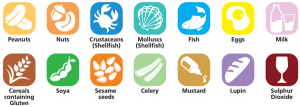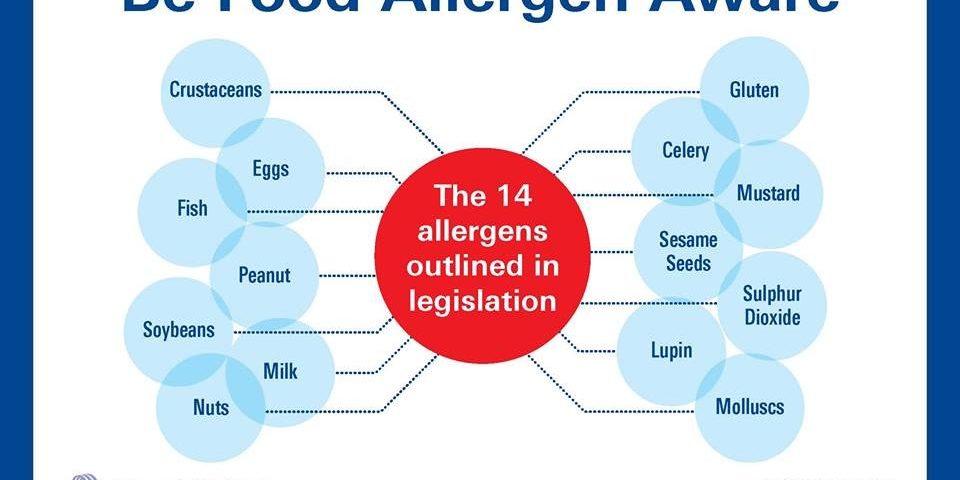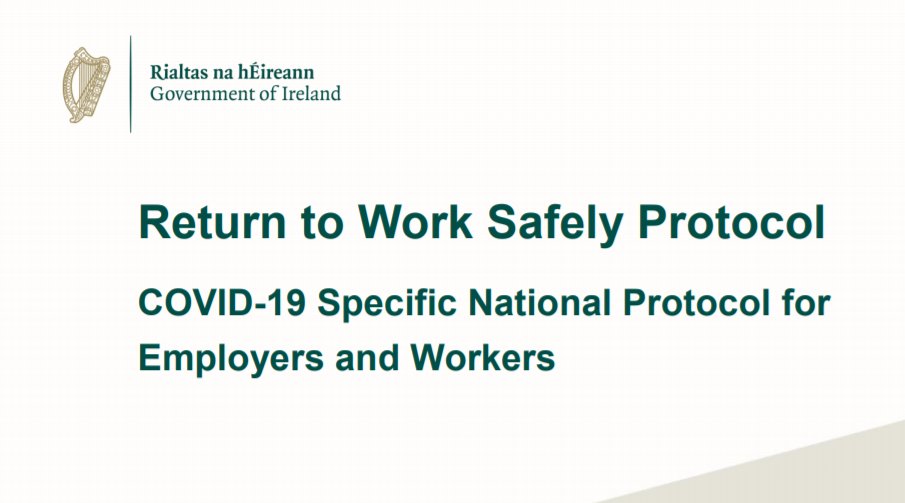Food Allergy Hospitalisations and Fatalities are Increasing!

Is your Sushi Safe?
30/09/2019
Working from home is a Pain in the Neck! Literally! Office Ergonomics for a Healthy Workplace
11/01/2020Food Allergy awareness and communication must be a priority for all food businesses. There are approximately 10 fatalities due to allergens every year in the UK and less than 1 fatality per year in Ireland. The allergen legislation was only passed in 2014 as a result of a huge increase in allergic reactions. There was a 615% increase in hospitalisations due to anaphylaxis (not just food) between 1992- 2012. The number of hospitalisations in Ireland due to food related anaphylaxis has increased from 60 per year in 2008 to 100 in 2017.
In Ireland 3-6% Children have food allergies and 1-2% of adults. Some children grow out of allergies such as milk or eggs but generally nut allergies are for life.

Some of the highly publicised fatalities from food allergen anaphylaxis include:
Emma Sloan, 14 years old who died in 2014 in Dublin after eating in a Dublin restaurant just a month prior to the current allergy legislation coming into force. Emma had a severe peanut allergy and mistakenly ate satay sauce containing peanuts from the buffet style restaurant.
Natasha Ednan Laperouse, 16 years old died on board a BA flight from the UK to France in 2016 after eating a Pret a Manger baguette containing sesame, which she was allergic to. Sesame was not listed as an allergen on the food packaging. New food packaging legislation dubbed ‘Natasha’s Law’ will come into force in England in 2021 where the listed 14 allergens must be identified.
Owen Carey, 18 years old died in London in 2017 due to a milk allergy after ordering grilled chicken burger in Byron Restaurant. He made staff aware of his allergy, but they failed to tell him that the chicken burgers were marinated in butter milk. He died 55 minutes after consuming the food.
1 in 5 Irish consumers eat out every day. There is a huge danger of eating out for someone with a food allergy.
Dr. Aideen Byrne, paediatric allergy specialist says that the risk is just too high and advises against eating out.
Food Allergen Legislation, Regulation (EU) 1169/2011 & SI 489 came into force in Ireland in 2015. The Food Safety Authority conducted a targeted audit of Allergen Information 3 years after the legislation was introduced and found that while 68% of food businesses were providing allergen information, 76% of that information was not accurate.
Some key things a food business must do is:
- Food business must identify all 14 food allergens in use.
- Provide easy access information without asking. A customer should not have to ask for information, it should be readily available and accessible.
- All allergens should be listed on the menu.
- At a buffet, there should be signage with allergen information beside each food item.
- Allergen information should be included on the specials board.
- Decanted food (condiments) should be clearly labelled
- Pre-packed food must contain accurate allergen information in bold text.
- All food preparation & service staff must be trained in allergen awareness and must know what allergens are in each dish on the menu.
The 14 major allergens that must be declared in Ireland are as follows: Crustaceans such as prawns or shellfish, Eggs, Fish, Peanuts, Soy Beans, Milk, Nuts such as cashews or almonds, Celery, Mustard, Sesame, Sulphur dioxide or sulphites, Lupin and Molluscs. There are a huge increase in allergic reactions to both strawberries and kiwi’s but these are not currently listed under legislation.
Choice Training regularly attend seminars and training via the Food Safety Authority of Ireland, the Food Safety Professionals Association and the National Hygiene Partnership with leading experts from the FSAI. We are never complacent, ensuring the training we deliver is always up to date.
We deliver a suite of food safety courses from basic awareness to Level 3 management of HACCP Training. You can see our Food Allergen Training here.









